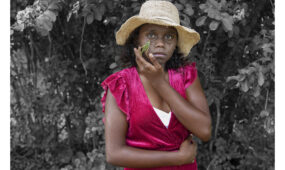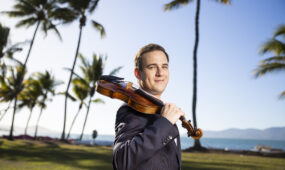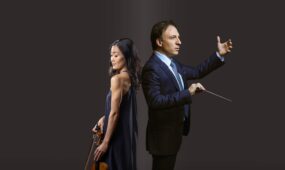Dance review: Australian Ballet’s Nijinsky
InReview
In Nijinsky, the Australian Ballet brings to the stage a spectacle of male dancers showcasing the erotic power of dancer and mentor, the bond between brothers, and the tragedy of men at war.

American choreographer John Neumeier’s Nijinsky pays tribute to one of the greatest dancers and choreographers of the 20th century, the “God of Dance” Vaslav Nijinsky (1889-1950). Nijinsky modernised ballet with his unconventional choreography before spiralling into madness with the onset of schizophrenia.
Neumeier’s work sees Nijinsky (played on opening night by principal artist Kevin Jackson) perform for the last time, as he remembers his greatest roles, his family and the war. The world around him becomes fragmented, absurd and sometimes nightmarish.
The ballet opens with theatre-goers wandering onto the stage, waiting in anticipation for Nijinsky’s final performance. They flirt with each other, admire the stunning set, and choose seats before Nijinsky takes the stage.

Nijinsky. Photo: Jeff Busby
According to an account by his wife, Romola de Polszky, Nijinsky began that day, in 1919, by staring at the audience for a prolonged time and then stating: “Now I will dance the war… the war which you did not prevent and are also responsible for.”
Neumeier’s choreography sees this pain translated into sharp thrusts, shaking hands and slumped posture, until the memories take over. In the first act, Nijinksy dances with roles of his past (including Harlequin, the Poet from Les Sylphides, the Golden Slave from Schéhérazade and The Rose in Le Spectre de la Rose) and with his future wife; members of his family flit across the stage.
The choreography shifts between classic poses by ballerinas in white tutus, and angular movements reminiscent of ancient Egyptian paintings. Traditional dancers wearing black and white are interrupted by the bright, colourful characters of his more modern ballets.
The setting – neon circles raised above the stage – is somewhat jarring, until you learn of Nijinsky’s fixation with the perfect form of circles. Any confusion is swept away by the erotic love, lust and power struggle between Nijinsky and his mentor, Serge Diaghilev, with choreography that highlights the grace, strength and beauty of the male dancers.
In act two, the narrative takes a dramatic turn following the outbreak of World War I and the death of Nijinsky’s brother. The military costumes and loud movements – including stomping, screaming and crying from the performers – sends chills down the spine. The deaths and Nijinsky’s spiral into madness is overwhelmingly tragic and, with this, Nijinsky reaches its narrative climax.

Photo: Jeff Busby
The score comprises myriad pieces, including music by Schuman, Chopin, Rimsky-Korsakov and Shostakovich. It uses both the simplicity of an on-stage grand piano, and the grandeur of the orchestra. In the scenes portraying the war, the marching snare drum contrasts with the chaos of the soldiers and the audience sees the most emotional ensemble work.

Get InReview in your inbox – free each Saturday. Local arts and culture – covered.
Thanks for signing up to the InReview newsletter.
Standout performances on opening night were those of Kevin Jackson (Nijinsky), François-Eloi Lavignac (Nijinsky’s brother, Stanislav) and Adam Bull (Nijinsky’s mentor and lover, Diaghilev). But that’s not to overlook the magnificence of female soloists, including Amy Harris as Nijinsky’s wife, Romola.
Nijinsky is a stunning modern ballet that deserves its title as a “masterpiece”, drawing on a diverse array of influences and styles to celebrate the achievements of a great dancer.
The Australian Ballet is performing Nijinsky is at the Festival Theatre until October 18.
Support local arts journalism
Your support will help us continue the important work of InReview in publishing free professional journalism that celebrates, interrogates and amplifies arts and culture in South Australia.
Donate Here





Comments
Show comments Hide comments